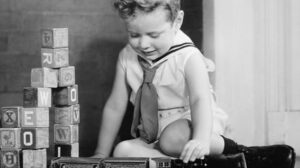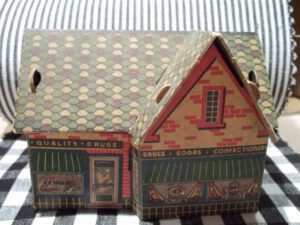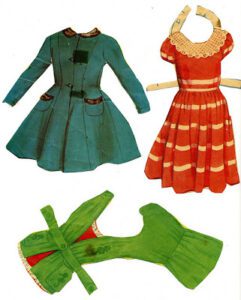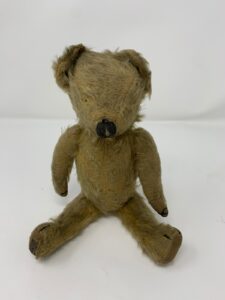In today’s #ForgottenFriday, we are looking into toys and games played by children in World War Two.
Toys and games have always reflected the attitudes, humour and imagination of the culture and times that created them.
While toys are often viewed as luxury items, the necessity of toys during wartime became apparent in Britain in the early stages of the war, when many children were holed up for long hours in air raid shelters, or had been evacuated to the countryside where there was little for ‘city kids’ to do. With little in the way of entertainment or distractions, toys were needed in order to occupy the children.
Toys made of rubber or various metals – tin, lead, and cast iron, among others – had been popular in pre-war years, especially for things like toy soldiers and toy trains, tanks, and cars, but due to wartime manufacturing demands, using metal for toys became prohibited.

To raise money for the war effort, schools started ‘Spitfire funds’ and National Savings Groups. Children saved money each week instead of spending it on toys.
Many toy manufacturers, in fact, were pressed into converting their factories from toy factories to facilities that produced wartime equipment. The Lionel Corporation, Daisy Outdoor Products, the Louis Marx Company, and the Smethport Specialty Company, among others, were forced to go down this route and cease toy production during WWII.
Toys continued to be manufactured, however – but the materials of which they were constructed were now mainly paper or cardboard. Even with such restrictions, though, some manufacturers, like the Lionel Corporation, were able to make impressive moving train sets out of those materials.

War occupied not just the manufacturing industries of the Allied nations but also the minds of their citizens. While military-themed toys had always been popular among boys, they surged in popularity during WWII. Paper and cardboard were used to make toy tanks, aircraft, and other model military vehicles, as well as soldiers.
War personalities were also popular subjects of toys in Allied nations. Adolf Hitler was a popular target for derision, with dart boards being produced with his face as the bullseye. In Britain a mechanical boxing game using cardboard figures was fairly popular, featuring a burly Winston Churchill going toe-to-toe with a feeble Hitler.
Card games were a big part of toys and collections due to paper and cardboard being some of the few materials that weren’t severely rationed made card games very popular too, often with military themes. One could collect or swap cards that featured models of tanks, ships, or aircraft.
Paper dolls were also very popular for the same reason as card games and cardboard houses: they were made out of a material that was not being heavily rationed. Canadian company produced paper nurses, soldiers in a variety of uniforms, and model battleships that could be folded into shape.

Toys remained, for the most part, luxuries for children of wealthier parents, though, and most kids, especially in Britain, had to make do with minimal toys.
An old soccer ball was all many kids had, or a bag of marbles or jacks, and kids had to get a lot of mileage out of these. There were also toy exchanges, where children could get together and swap their old toys, which saved parents from having to buy new ones.

Improvised toys were very popular, such as old motorcycle or bicycle wheels rolled along the streets by kids, or other scrap items that were used for similar fun. Then, of course, there were old favourites that didn’t require toys – games like hide and seek (which could be great fun, albeit a little risky, in bombed-out buildings), four square, or hopscotch.
Here at Eden Camp we are here to preserve and restore items of the past. In this case, Gerald the Merrythought Bear. A very well loved Stuffed Bear.

Hi, my name is Gerald, although I have no eyes, I have the biggest heart. I love to play hopscotch and cards. As a Merrythought bear I have seen and endured the horrors of the Second World War, but with me by my owner’s side I was there to comfort them during times of terror.
I was made in 1910, a long time ago! Although my joints are stiff, and I lack fur, I have many stories to tell.
Now it is 2022, I am looking for a new owner to adopt me! My home in Eden Camp’s Archive, but I would love to update you on the things we get to do across the year.
Adopt Gerald today!!


